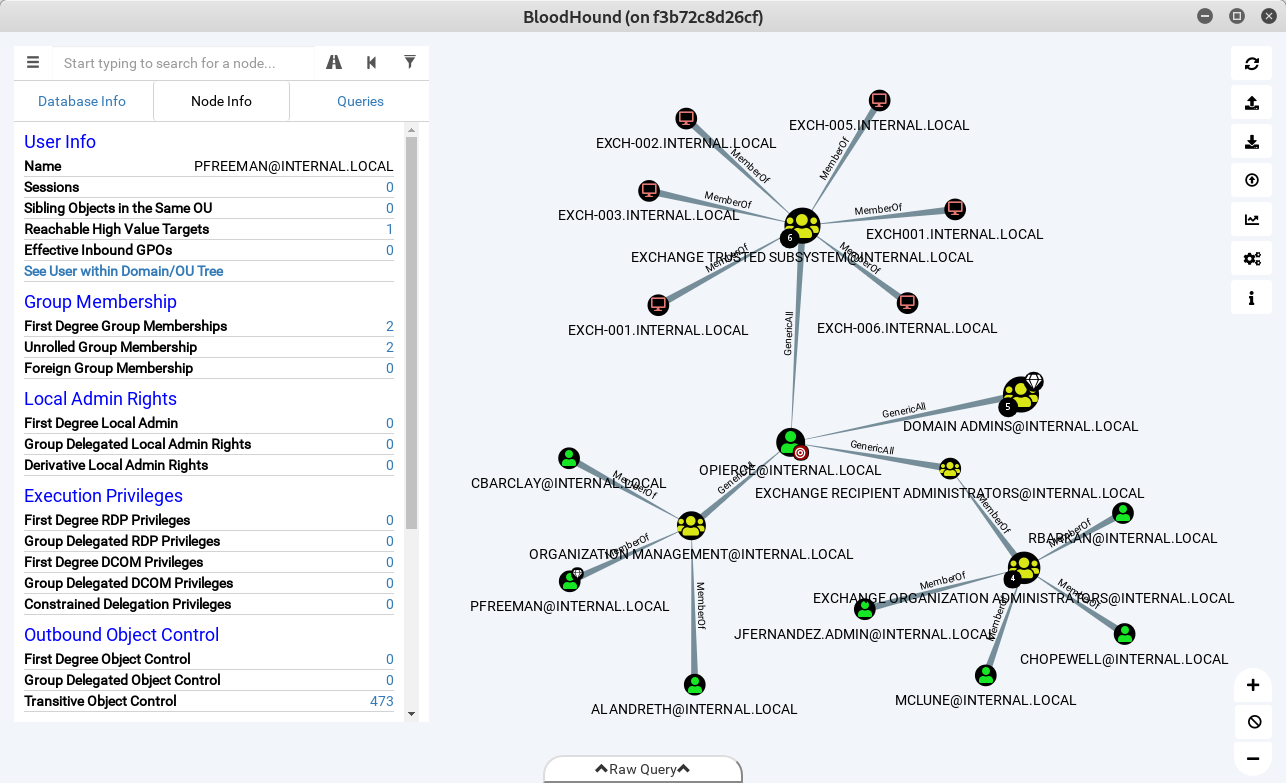docker run -it \
-p 7474:7474 \
-e DISPLAY=unix$DISPLAY \
-v /tmp/.X11-unix:/tmp/.X11-unix \
--device=/dev/dri:/dev/dri \
-v $(pwd)/data:/data \
--name bloodhound rckl/bloodhound
docker build . -t bloodhound
docker build . -t bloodexample --build-arg data=example
- neo4j version
- bloodhound version
docker build . -t bloodhound --build-arg neo4j=4.2.3 --build-arg bloodhound=4.0.1
docker run -it \
-p 7474:7474 \
-e DISPLAY=unix$DISPLAY \
-v /tmp/.X11-unix:/tmp/.X11-unix \
--device=/dev/dri:/dev/dri \
-v ~/Desktop/bloodhound/data:/data \
--name bloodhound bloodhound
docker run -it \
-e DISPLAY=unix$DISPLAY \
-v /tmp/.X11-unix:/tmp/.X11-unix \
--device=/dev/dri:/dev/dri \
-v ~/Desktop/bloodhound/data:/data \
--name bloodexample bloodexample
docker start bloodhound
Login:
- Database URL: bolt://localhost:7687
- DB Username: neo4j
- DB Password: blood
There is a bloodhound/data folder in your Desktop with the Ingestors.
data folder is also mounted as volume, use it to drop your data and load it in BloodHound GUI.
